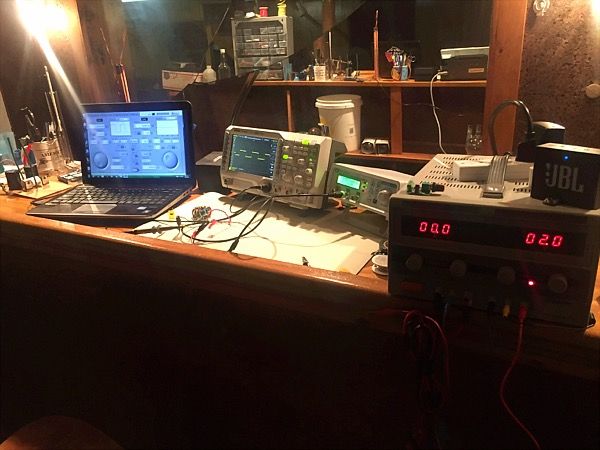Sigurthr
0
- Joined
- Dec 11, 2011
- Messages
- 4,364
- Points
- 83
[Three Channel Method]
You need a resistor (or capacitor) on the primary, none on the secondaries. The calibration port is only used to driving high impedance loads like the scope probes. Probes are typically 1MegOhm, so stick a meg resistor in series with one of the primary leads, or use a 150pF capacitor in series. Or any combination of resistor and capacitor that equals about 1MegOhm impedance. Xc = 1/(2pi*f*c) c is in farads. But yeah you look at the outputs in reference to the inputs, one of them will be antiphase if done correctly.
[Two Channel Method]
You can also forgo using the calibration port and just use an alkaline, NiMH, ZnC, or other high internal resistance battery (no lithiums or lead!). What you do is place the scope probes across the secondaries, connect one primary lead to the battery negative, and then momentarily connect the other primary lead to the battery positive terminal. You don't want to leave the positive connected for more than a second or so, transformers don't transmit DC, just changing voltages only, so it will only see the change in voltage as you connect and disconnect the positive. While the positive is actually connected you're just burning power in the primary winding. Anyway, as before one secondary should be antiphase of the other.
You need a resistor (or capacitor) on the primary, none on the secondaries. The calibration port is only used to driving high impedance loads like the scope probes. Probes are typically 1MegOhm, so stick a meg resistor in series with one of the primary leads, or use a 150pF capacitor in series. Or any combination of resistor and capacitor that equals about 1MegOhm impedance. Xc = 1/(2pi*f*c) c is in farads. But yeah you look at the outputs in reference to the inputs, one of them will be antiphase if done correctly.
[Two Channel Method]
You can also forgo using the calibration port and just use an alkaline, NiMH, ZnC, or other high internal resistance battery (no lithiums or lead!). What you do is place the scope probes across the secondaries, connect one primary lead to the battery negative, and then momentarily connect the other primary lead to the battery positive terminal. You don't want to leave the positive connected for more than a second or so, transformers don't transmit DC, just changing voltages only, so it will only see the change in voltage as you connect and disconnect the positive. While the positive is actually connected you're just burning power in the primary winding. Anyway, as before one secondary should be antiphase of the other.




